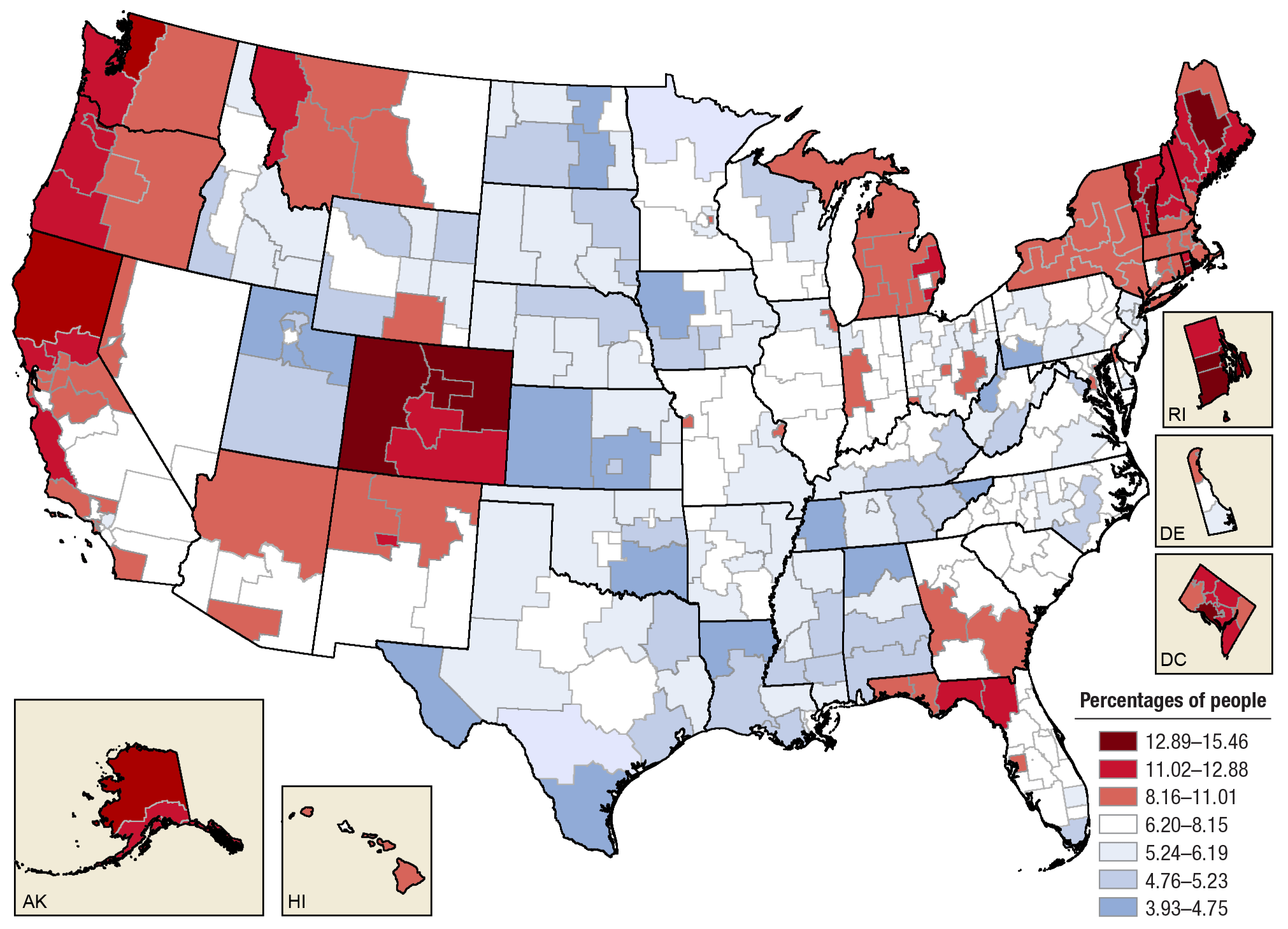
Do you see the pattern?
Report provides insight into marijuana use and risk perception patterns in communities across the nation
News Release from SAMHSA, July 26, 2016
A new report by the Substance Abuse and Mental Health Services Administration (SAMHSA) shows that rates of marijuana use and perceptions of risks of harm associated with marijuana use vary significantly among regions of the country and even within states. The SAMHSA report uses detailed tables and color coded maps to present estimates for smaller areas within states (substates), which provide a more detailed look at these issues within states and throughout the nation.
Regionally, the study found that among people aged 12 and older, current (past month) marijuana use rates were highest in the West (9.70 percent) and lowest in the South (6.4 percent). People in the South also had the highest rate of perceived great risk from monthly marijuana use (32.6 percent), while people in the West had the lowest (25.6 percent).
Moreover, there were striking differences in estimates of current marijuana use and perceptions of risk of harm from using marijuana monthly across the different substate areas. For example, percentages of current marijuana users ranged from a low of 3.9 percent in a substate region in the southernmost part of Texas to a high of 15.5 percent in San Francisco, Calif.
Levels of perceptions of great risk in using marijuana monthly ranged from a low of 14.6 percent in Ward 3 of the District of Columbia to a high of 49.3 percent in a substate region encompassing all of Miami-Dade County and Monroe County in Florida.
“This report provides a very detailed understanding of marijuana use and perception patterns in communities across the nation,” said Fran Harding, Director of SAMHSA’s Center for Substance Abuse Prevention. “This information can help public health officials and others better gauge the marijuana-related prevention and treatment needs in their communities and fine-tune their programs and services to best address them.”
To meet this public concern, SAMHSA is developing educational resources to inform parents, teens, schools, communities, workplaces, behavioral health professionals and others about many aspects of marijuana use. This information includes a wide range of resources related to marijuana, including: medical/recreational use of marijuana, legalization/decriminalization issues (marijuana is still illegal under federal law), prevention, early intervention, treatment, and statistics and trends.
Additional marijuana related updates from research, media, and communities are provided through the weekly listserv from SAMHSA’s Prevention of Prescription Drugs in the Workplace initiative. This initiative has also completed several fact sheets, webinars, technical assistance, and collaborative projects with workplaces and communities.
SAMHSA’s report, “Marijuana Use and Perceived Risk of Harm from Marijuana Use Varies within and across States,” is available at http://www.samhsa.gov/data/sites/default/files/report_2404/ShortReport-2404.html.
It is based on data drawn from SAMHSA’s 2012-2014 National Survey on Drug Use and Health (NSDUH) – an annual survey of 68,000 Americans aged 12 and older.
For more information about SAMHSA and NSDUH please visit: http://www.samhsa.gov.
![[ Click Here to Enter an Alternate Text for this Image ] [ Click Here to Enter an Alternate Text for this Image ]](http://www.samhsa.gov/data//sites/default/files/report_2404/images/image_file_786_BlockImageOne_2086138740.png)